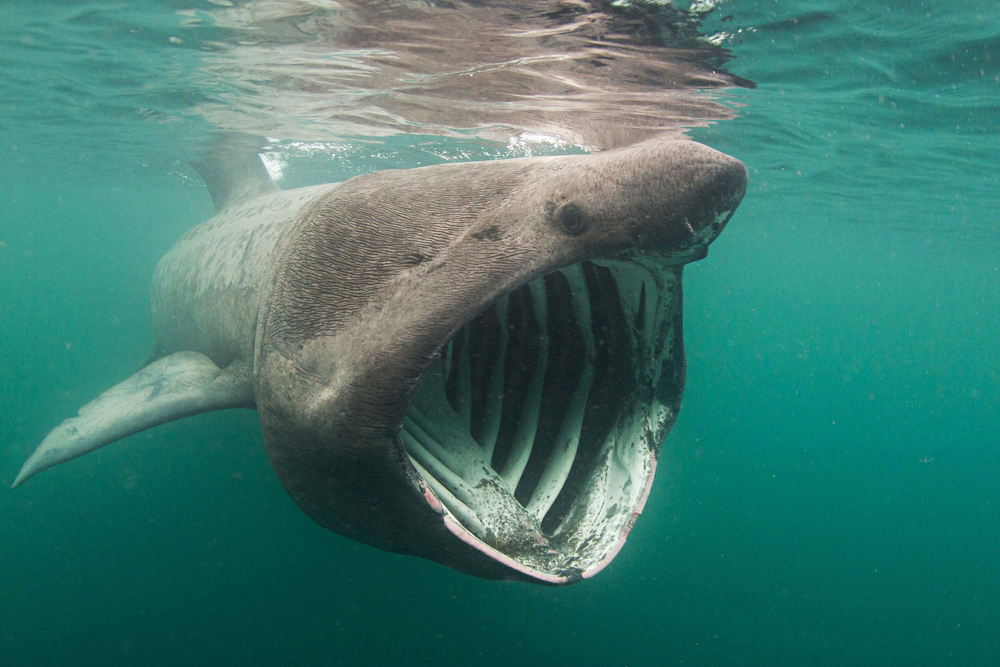It’s hard to say if the reappearance of bizarre but harmless basking sharks in the Santa Barbara Channel is a fluke or a full-blown comeback, but for now boaters are enjoying near-constant sightings of the giant fish. Second in size only to whale sharks, basking sharks can reach 30 feet in length and feed like baleen whales on tiny krill and plankton. They swim lazily along with their big, white mouths agape, rising and falling through the water column with the daily movement of their prey.
The sharks are normally elusive. Scientists know very little about their behavior, other than that they tend to swim in murky water where there’s likely to be higher concentrations of food. Their numbers along the West Coast have fluctuated over the last century, but since the late 1980s, very few had been spotted. They were hunted for their valuable fins and livers, and salmon fishermen in Canada, fed up with the sharks getting tangled and ruining their nets, put cutters on the bows of their boats to intentionally run them down.
Scientists don’t know if this is a good thing or yet another disruption of climate change.
Sightings in the S.B. Channel started to climb in mid-April, with reports coming from as far south as Santa Monica. Island Packers, the Ventura-based company that ferries people back and forth to the Channel Islands, has reported seeing as many as 20 in a single day. Private boaters say they’re spotting the sharks most often around Santa Cruz and Anacapa islands.
Christopher Lowe, director of the Shark Lab at CSU Long Beach, said scientists aren’t sure why the gentle giants are back or if they’re here to stay. “We’re not sure if it’s population recovery, if they’re moving with their food, or if oceanic conditions are influencing where they go,” he explained. National Oceanic and Atmospheric Administration researches recently tagged two individuals for further study and plan to tag four more.
They’re also asking the public to contribute their observations. If you see a basking shark, call (858) 546-7023 or email basking.sharks@noaa.gov. If you’re driving a boat when you spot one, slow down to six knots and do not make any sudden changes in direction or speed. If you’re closer than 300 feet, switch your engine to neutral.




